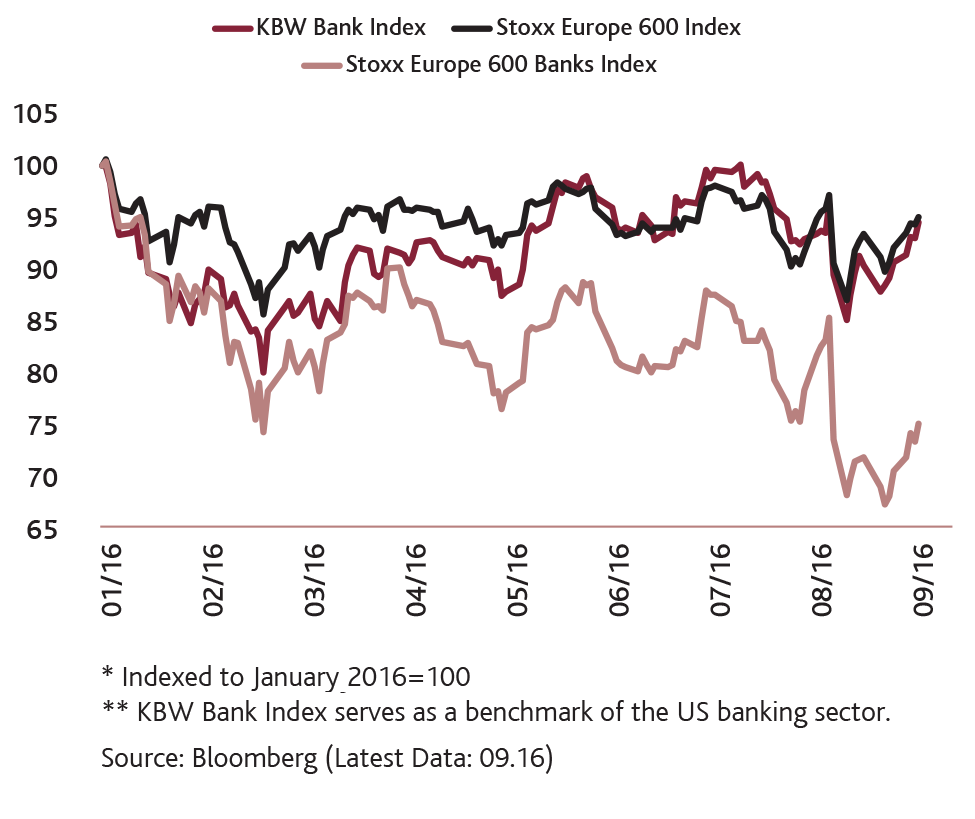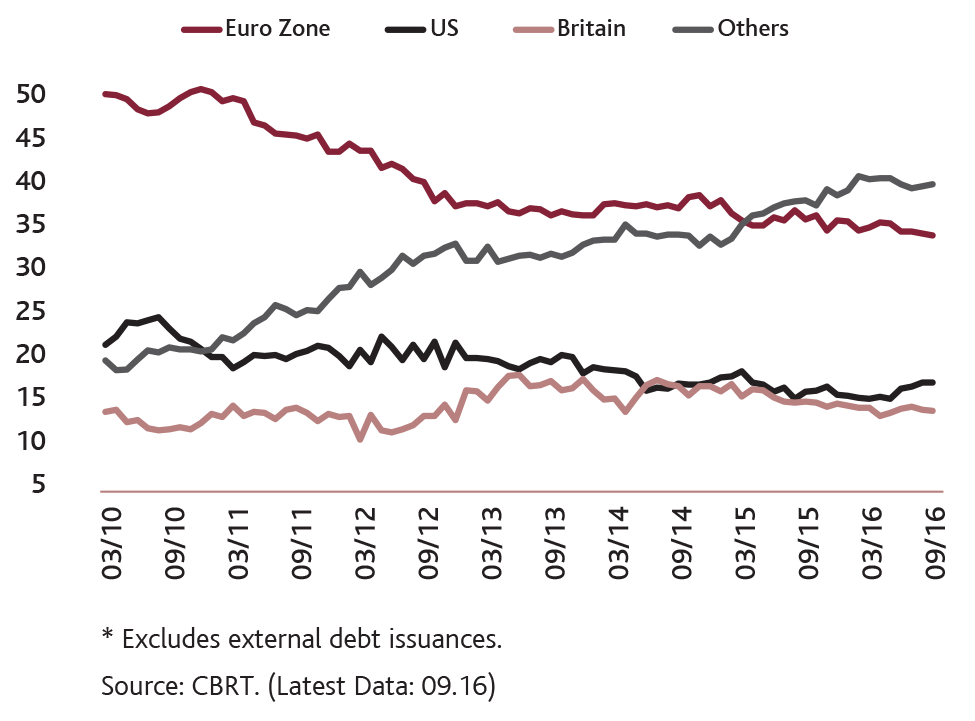In 2016, volatilities in global financial markets continued due to global growth risks and political uncertainties in advanced economies. While markets were driven by the concerns surrounding the Chinese economy in the beginning of 2016, the expectations for US elections marked the second half of the year. Japan and European Central Banks’ (ECB) expansionary monetary policies and the positive mood till the finalization of US election results supported the capital inflows to emerging economies. However, uncertainties regarding the US economic policies after the election results changed the perceptions and volatilities remarkably increased afterwards. Britain’s exit decision from the EU, the constitutional referendum in Italy that resulted in the resignation of the Italian prime minister and the upcoming referendum in Spain were the other political developments that occupied the financial agenda in 2016. Within the past year, the uncertainties toward monetary policies in advanced economies also had a significant impact on market movements.
In the first half of 2016, the Turkish economy grew receiving support from domestic demand despite geopolitical risks and decelerating global growth. In addition to the net income effect created by the wage increase and the fall in the oil price, reduced domestic uncertainty was influential on positive developments in terms of growth. In the second half of the year, growth lost its momentum and geopolitical developments had significant negative impacts on export and tourism revenues. While domestic uncertainties led to volatilities in the markets to some extent, effective uncertainty management was maintained by the CBRT’s FX liquidity measures and other measures supporting financial stability.
Improvements in the current account since 2012 continued in 2016 due to commodity price falls, continued cautious monetary policies and macroprudential policies. While the deteriorating Russia-Turkey relations in the beginning of 2016 reflected negatively in the current account, as a result of the improvements in the Russia-Turkey relations, modest but positive growth rates in the EU, and low commodity prices, the downward trend in the current account continued and kept on its positive contribution to the reduction in external financing needs.
Growth in household assets and liabilities continued and financial leverage ratio (liabilities/assets) kept its fall in 2016 as a result of the faster growth in household assets than in household liabilities. In a period of heightened global uncertainties and FX volatilities, an important issue in emerging economies in terms of financial stability is undoubtedly FX borrowing. Firms’ financial borrowing increased in 2016 and firms’ open FX positions kept their upward trend. Though an FX open position is considered to have a negative impact on financial stability, the facts that firms that have FX liabilities are often those companies with significant shares in export facilities and that a significant amount of foreign borrowing finances state-guaranteed public private partnership projects constitute a natural hedge against FX volatilities. In addition, non-performing loans (NPL) ratios in the banking sector that are far lower for FX than Turkish lira is another positive development regarding FX risk.
In 2016, intermediary activities continued healthily. The modest increase in credit growth rates continued and consumer credits presented significant recovery in the third quarter of 2016, with the impact of the fall in interest rates and effective macroprudential regulations. The recovery in commercial credits remained limited due to weak demand and banks’ sensitivity toward credit risk. NPL ratios showed a modest increase due to deceleration in domestic economic activity. However, when international comparisons are concerned, the levels should be accepted as reasonable. Moreover, this modest increase in NPL ratios does not have any meaningful impact on banking activities because profitability in the banking sector rose in 2016, and as a result, capital adequacy ratios increased.
Banks’ FX financing utilization remained almost unchanged compared to the previous year. In 2016, banks’ liquidity buffers to global shocks were adequate. The amount of external debt remained almost flat and the lengthening maturity of the debt stock supports banks’ strength against global shocks. Lately, developments in eurozone banks that have important role in allocating global liquidity are being closely monitored. Graph 24 exhibits the fall in the eurozone banking indices that is presumably related to the slump in these banks’ profitability. The concerns depicted in the graph were a source of concern in 2016. While the modest growth rates in the eurozone have the potential to relieve the profitability problems, the concerns will likely to continue in the upcoming years. As exhibited in Graph 25, the Turkish banking sector’s external financing sources continued to diversify in terms of geography and banks, and as a result, eurozone related risks are reduced.
Graph 24. Bank Indexes in Euro Zone and USA *,**

Graph 25. Regional Distribution of External Debt *
Based on Headquarters, Percent)
